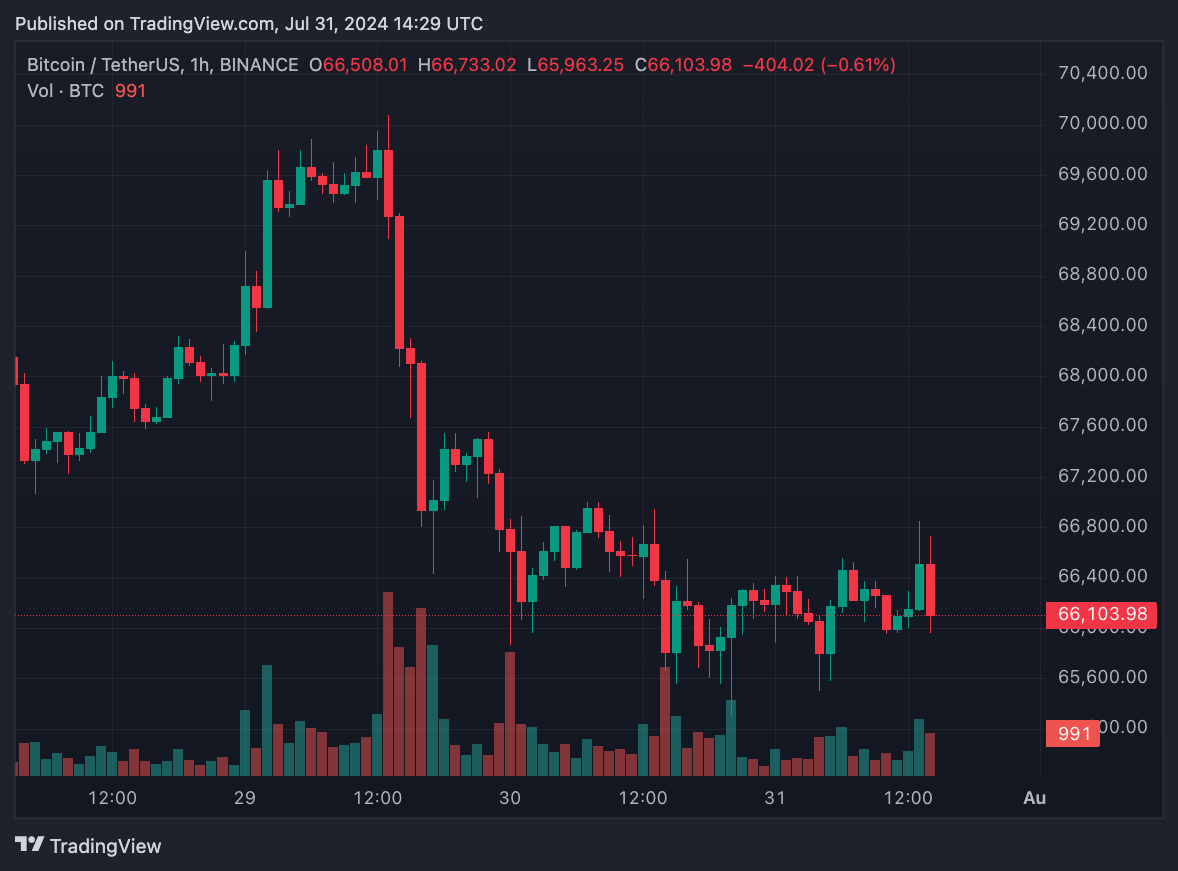Industry experts expressed optimism about the sector and the leading cryptocurrency’s price performance post-halving in comments to crypto.news today, July 31.
Bitcoin mining has been in the spotlight since the latest Bitcoin halving in April. The post-halving scenario typically marks a period of struggle for miners, as it reduces mining rewards, which, of course, affects miners’ profitability. However, in comments to crypto.news today, several mining industry insiders suggested that Bitcoin miners are bullish on the current market outlook.
According to Sascha Grumbach, founder and CEO of Green Mining DAO, miners are expecting a post-halving Bitcoin (BTC) price rally, which has historically happened “within three to six months after each halving event.”
Despite expectations that post-halving conditions could compel miners to sell their holdings to sustain operations, a surprising trend has evidently emerged. Since April, major mining firms have instead been holding onto most of their Bitcoin stash, according to Bitwise’s Q2 report.
In the first quarter of 2024, the five largest Bitcoin mining firms sold a total of approximately 2,000 BTC, the lowest in two years, compared to over 7,000 BTC in the fourth quarter of 2023. As June approached, this trend not only persisted, but intensified with little to no selling activity.
The optimism from miners is also fuelled by the institutional interest that followed the introduction of exchange-traded products for Bitcoin in the United States, which have raked in $17.71 billion as of July 29. Commenting on the pattern, Grumbach told crypto.news:
“Institutional investments are seen as a validation of Bitcoin’s value and potential, leading to increased demand and price stability. Miners, recognizing this trend, prefer to accumulate rather than sell, anticipating a more favorable market environment in the near future,”
Jonathan Hargreaves, global head of business development & ESG at web3 firm Elastos, also observed a similar sentiment among his contacts in the mining sector, telling crypto.news in comments today:
“Our merge miners and mining contacts are all expressing a strong belief that the market is about to experience a significant upward surge. As a result, they’re all holding onto their positions until the market makes its move.”
However, the same cannot be said for smaller miners. The challenge of surviving the post-halving market has been compounded by continually increasing mining difficulty, which mandates hardware upgrades to improve efficiency and, in turn, profitability.
As a result, smaller miners have had to offload portions of their Bitcoin holdings to stay afloat. CryptoQuant’s head of research, Julio Moreno, also highlighted this trend yesterday in an X post.
Some miners even had to cease operations post-halving due to increasing operational costs.
Also speaking to crypto.news today, Andy Fajar Handika, CEO and co-founder of Loka Mining, says this phenomenon was indeed mainly observed among newer mining companies that “didn’t prepare for the high volatility post-halving.”
The taxing market conditions also pushed some miners towards less competitive alternative markets, such as artificial intelligence, where they could leverage their existing infrastructure.
Bitcoin miners are recovering
That being said, the situation seems to be improving as July comes to an end. Per a Bitfinex Alpha report published last week, Bitcoin miners have returned to profitability for the first time since the halving. This shift indicates that miners who survived the post-halving stress have moved on to newer, more efficient machines, thereby boosting their profit margin.
The Bitcoin mining hashrate, which slumped to levels last seen during the 2021 China mining ban, was also improving, according to crypto financial services platform Matrixport.
As crypto.news previously reported, President Donald Trump’s ambitious plans to add BTC as a national reserve asset, along with calls for the United States to lead global Bitcoin production, also act as bullish catalysts for the mining industry.
In the current economic climate, firms like Marathon Digital Holdings have started strengthening their reserves. The mining giant added $100 million worth of Bitcoin to its stash in late July, demonstrating its confidence in the market’s stability.
Meanwhile, other top miners also held onto their Bitcoin reserves, showcasing a broader pattern of asset accumulation among the top players. Per its June report, mining firm Riot has not sold any Bitcoin since January, while CleanSpark has only offloaded small portions of its holdings.
Loka Mining’s Handika predicted that miners will continue to accumulate and expects “limited selling pressure” near Bitcoin’s next all-time high.
According to Elastos’ Hargreaves, selling pressure would be around the $125,000 per Bitcoin mark, when he expects miners to start “dollar-cost averaging” into profits. That’s approximately an 86% surge from Bitcoin’s current price of $66,928 at the time of writing.
Regarding when this could happen, he explained:
“The timing of this will depend on the speed of price growth—if [the price of Bitcoin] accelerates quickly, it could happen by the end of this year, or it might extend into 2025.”
Green Mining DAO’s Grumbach also pointed out that Bitcoin’s recent trading volume dwarfs the output from new mining, making it relatively insignificant. As such, he doesn’t expect any selling pressure from miners in the short term.
